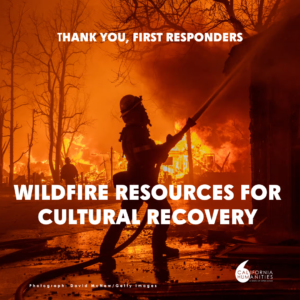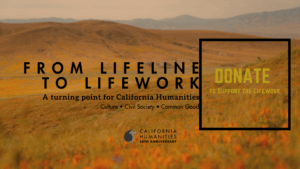At the end of November, California Humanities partnered with AMC Theatres to host a screening of the new film Green Book, starring Mahershala Ali and Viggo Mortensen. Historian, professor and former California Humanities Board Member Kenya Davis-Hayes, Ph.D. wrote a blog post on the real story of the Green Book and the incredible places it listed, some of which still stand today. The second part of this blog post, by California Humanities staff, is below, with a list of notable locations throughout the state that the Green Book listed, some of which are still open today.
See Part I of this story, by Dr. Kenya Davis-Hayes.
As families prepare to go on trips this coming year, we’re reminded of the once-ubiquitous The Negro Motorist Green Book. Published by postal worker Victor Hugo Green, the guide was published from 1936 to 1967, more than three decades, as an aide to African American travelers who wanted Black-friendly accommodations, sightseeing, rest stops, and necessary services such as auto repair and gas stations on their trips.
From the Introduction to the 1949 edition[1]:
“With the introduction of this travel guide in 1936, it has been our idea to give the Negro traveler information that will keep him from running into difficulties, embarrassments and to make his trips more enjoyable.”
The New York Public Library Digital Collections have a digitized set of the guides from nearly every year that it was in circulation available online. In the first year, the guide was focused locally on the New York metro region, but based on widespread demand, it expanded in 1937 to a national scope. We read through the issues and pulled out some highlights from the California listings. Several, although not all, of these sites are still standing in some form or another. You may consider visiting them on your next cross-California road trip.
1939 Edition
Dunbar Hotel, Los Angeles
This famous hotel on Central Avenue in Los Angeles was known as a hub for the African American community, particularly the jazz scene in South Central, through the 1930s and 40s. It hosted the first national convention for the National Association for the Advancement of Colored People (NAACP)[2]. Once called Hotel Somerville, it was built, owned, and operated by a prominent Black family and was the only major Los Angeles hotel that welcomed African Americans for many years. Notable musicians Duke Ellington, Billie Holiday and Louis Armstrong, among many others, performed at the Dunbar’s nightclubs through the years[3]. It is now a Los Angeles Historic-Cultural Landmark and in the National Register of Historic Places.
1941 Edition
Murray’s Dude Ranch, Victorville/Apple Valley
Joe Louis was best known as a heavyweight boxer, but he also was a Wild West enthusiast, one of the regulars at Murray’s Dude Ranch in Victorville, California, at the edge of the Mojave Desert. Billed as “the only Negro Dude Ranch in the World,” the ranch was started by a family of Black Angelenos who began operating it as a group home for youth[4]. In the 1930s, spurred on by financial troubles, by the popularity of dude ranches in the area, they converted it to a guest ranch. Due to the publicity brought by Louis and other prominent African Americans such as Hattie McDaniel and Bill “Bojangles” Robinson the ranch thrived until Pearl Bailey took it over in the 1950s, renaming it “The Lazy B,” living there with her family for nine years. Over the decades the ranch slowly declined and in 1988 was burned to the ground.
1947 Edition
Edison Hotel/Booker T. Washington Hotel, San Francisco
This six-story, 115-room hotel in the Nob Hill/Tenderloin area was opened in 1910. The Sun-Reporter noted in the 1940s that it had a “notorious reputation.[5]” Rebecca Weinberg opened the six-story, 115-room hotel in 1910 as a rooming house. In 1951, the hotel was bought by William Bush, who spent $100,000 on remodeling and renamed it the Booker T. Washington Hotel. Traveling musicians and luminaries including the Nat King Cole Trio, Dr. W.E.B. DuBois, Dinah Washington and the Harlem Globetrotters stayed there. The hotel was closed and torn down in 1970.
Clifton Restaurant, Los Angeles
The oldest surviving cafeteria-style restaurant in Los Angeles and the largest public cafeteria in the world was founded in 1931 by Clifford Clinton—the name Clifton’s a portmanteau of the owner’s first and last. “Clifton’s Golden Rule” maintained that no one was ever turned away hungry, whether or not they could afford to pay. The Brookdale location was sold to a nightclub operator who reopened it in 2015, with multiple eateries throughout including an old-school steakhouse, a tiki bar, and a museum[6].
1951 Edition
This year the Green Book contained a feature about travel to Los Angeles. Focusing on the history, development, and notable sites of the region, the article states, “People brought to Los Angeles their traditions, customs and ideals, which accounts for the various forms of worships and the variety of architectural structures.”
1952 Edition
Dunlap’s Dining Room, Sacramento
Black entrepreneur George T. Dunlap operated this popular restaurant out of his dining room from 1930 to 1968. Three main dish options were served: fried chicken, baked ham and T-bone steak. Now a community center, it is listed on the National Register of Historic Places[7].
1953 Edition
Mo-Mo Sacramento Night Club
One of the many West End nightclubs that dotted the strip of what is now Capitol Avenue, Mo-Mo was a hub for the thriving but small Sacramento jazz scene of the 1940s. In the 1950s, the redevelopment of the area combined with a media campaign characterizing the African American nightclub district as “blighted” transformed it into today’s Capitol Mall[8].
1954 Edition
This edition featured a somewhat tongue-in-cheek article about history, climate, and sightseeing in the city of San Francisco. “It is suggested and very strongly too, that a topcoat accompany the newcomer any time of the year because the mornings are cold and the evenings are laughingly described as cool,” it reads, recalling the popular quote often and incorrectly attributed to Mark Twain, “The coldest winter I ever spent was a summer in San Francisco.”
Regarding the city’s famed Cable Cars, the article states, “When a more modern method of transportation was proposed by the Transportation Committee, it was overwhelmingly voted against by a group, who represented those San Franciscans who, dismiss any inconveniences suffered enroute from their homes on high to their downtown office and who, rather enjoy the thrill of being crushed inside or hanging helter-skelter from any side of these quaint cars.”
1957 Edition
California Hotel, Oakland
Located in West Oakland, the California Hotel opened during the Great Depression, and became a hub of cultural and community life for the region’s Black community in the coming decades. The hotel is now on the National Register of Historic Places. The hotel welcomed such high-profile guests as Billie Holiday, James Brown, Sly Stone, and Big Mama Thornton. In the 1970s the hotel closed. Since 2014, the building has been operated as affordable housing and commercial space, and now hosts a music venue [9] [10].
Yosemite National Park
This edition was the first to mention the National Park as a friendly destination for African American travelers, despite many of the sites listed in it having opened in the 1920s. The famous and luxurious Ahwanee Hotel (since renamed as the Majestic Yosemite Hotel), Camp Curry and Curry Village (since renamed as Half Dome Village), Yosemite Lodge, and Glacier Point Hotel (destroyed by a fire in 1969) are all included in the book.
See Part I of this story, by Dr. Kenya Davis-Hayes.
[1] https://digitalcollections.nypl.org/collections/the-green-book#/?tab=about&scroll=9
[2] https://www.scpr.org/blogs/southla/2013/06/24/14043/historic-dunbar-hotel-set-to-reopen-as-part-of-30/
[3] https://la.curbed.com/2011/10/4/10436362/famous-old-jazz-spot-getting-new-mixeduse-life-20-miles-of-bike
[4] https://la.curbed.com/2015/5/27/9956904/murrays-dude-ranch
[5] https://www.harlemofthewestsf.com/venues/edison-hotel/
[6] https://www.cliftonsla.com/
[7] https://noehill.com/sacramento/nat1992000308.asp
[8] http://www.midtownmonthly.net/music/west-end-jazz/
[9] http://ebaldc.org/property/california-hotel/
[10] https://www.eastbayexpress.com/oakland/a-new-music-venue-is-coming-to-the-california-hotel/Content?oid=18890687






